Spanish Golden Exam Review
1/12
There's no tags or description
Looks like no tags are added yet.
Name | Mastery | Learn | Test | Matching | Spaced |
|---|
No study sessions yet.
13 Terms
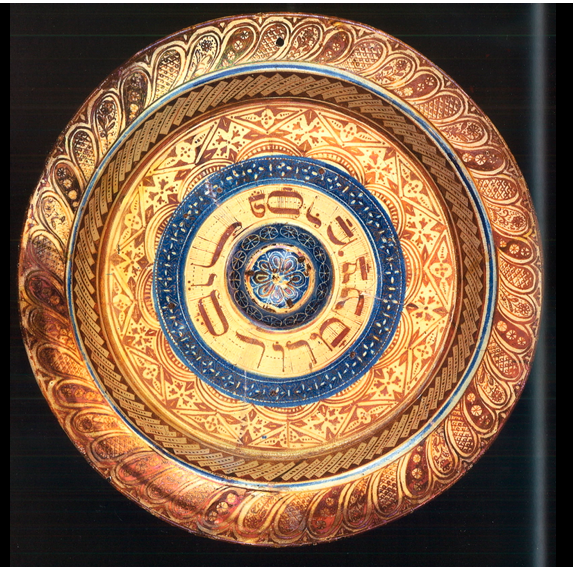
Passover Seder Plate. Lusterware, probably Valencia c.1480 Israel Museum, Jerusalem
Representative of the East on the Spanish. Present in the aniconic, non-figurative approach. This was made by Islamic artisans for Jews in Iberia (safartic) to practice their religion. Lusterware is made in workshops from the East, made in only one place in Valencia. It’s a tradition that’s been passed down. Specifically used in Passover to hold ritual objects celebrating Exodus.
Incorrect Hebrew script from Islamic makers show convivencia.
Convivencia, Lusterware
Convivencia
Spanish for "living together."Jews, Muslims and Catholics live together in Al-Andalus. Together does not always mean ideal, equal or peaceful.
Seder Plate
Lusterware
Seder Plate.
Made only in the east and brought to Valencia, Spain via Islamic artisans. Strong coppers and golds made to look like metal. Made from thin clay with a metallic sheen.
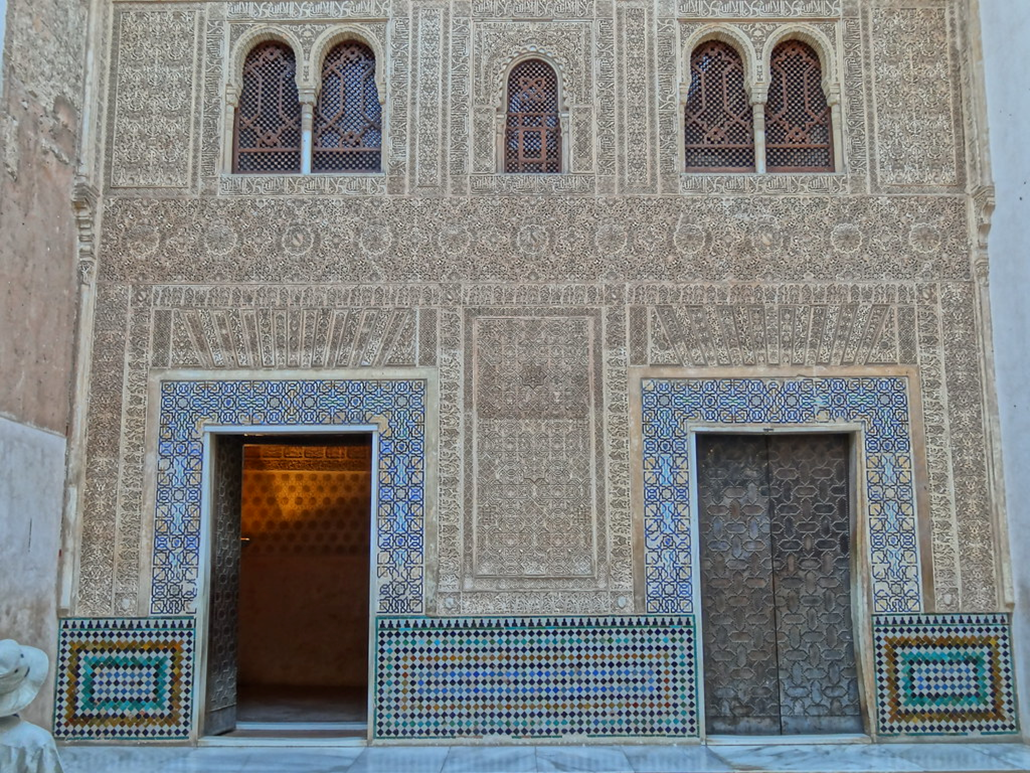
The Comares Palace. Alhambra. Granada, Spain.
The Red Fort, final foothold of the Nasrid empire on Iberia.
Alicatado tiling.
Mudejar -
Aniconic-
Calligraphy: inscription that reads “fork in the road” and “my gateway” confusing the identity of the sultan with that of the palace as a symbol of his power.
One door leads to the Sultan’s private quarters, the other to the court and a public space.
Facade meant to be arresting to viewers, consuming with opulence including the marble flooring and advanced mathematics and ornament.
Detailed stucco work with aniconic designs. The Geometric patterns are indicative of intellectualism and mathematic complexity.
Writing would have been understood by scholars invading.
Al Andalus and the Nasrid Empire
Nasrid empire (1232 - 1492) was the southern part of Iberia, a holding of Islamic society taken over by Isabel and Ferdinand during the reconquista. War with the Catholics lasted 700 years, culminating in 1492 when Granada fell and the final kind traded the Alhambra which never actually fell.
Al Andalus is the Arabic term for the southern region of the Iberian peninsula under Islamic rule.
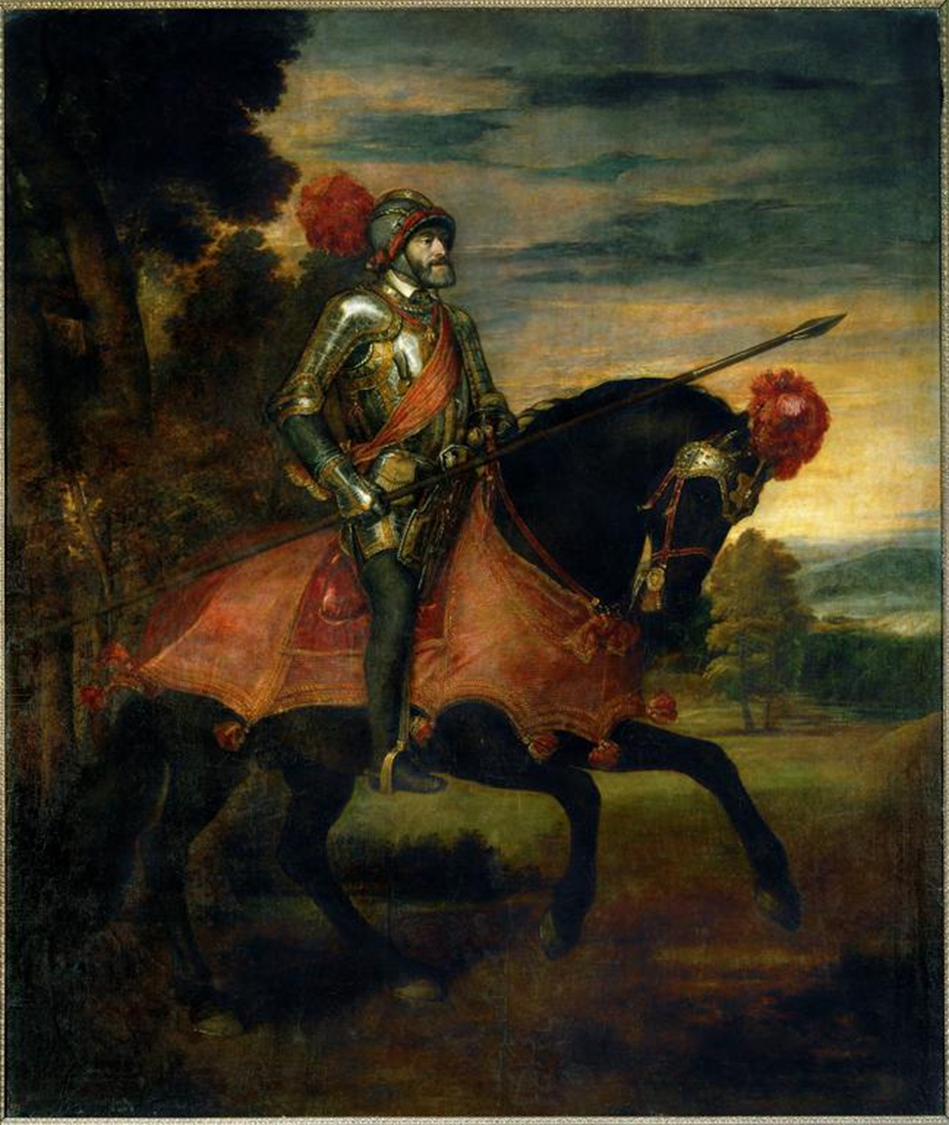
Carlos V Battle of Muehlberg Titian
Carlos V and Hapsburg Power - power of the king over battle. Emphasis on intrinsic power rather than military might. Because removed greaves shows that he’s leaving battle victoriously
Titian made this colore with an emphasis on emotion and atmosphere. Empahsis that he’s leaving a dark forest and stepping into the light. The lighting is unnatural, meant to place emphasis on the character and not realism.
Armor: historically accurate and painted from the real thing.
Protestants vs. Catholics battle: him as a Catholic king triumphing
Classicizing comparison to Marcus Aurelius further demonstration of imperial power. Classicizing because it invokes Roman imagery of him being a king in the italienate, venetian school of art that titian was working from
Equestrian - to look on a horse was indicative of a perfected princely education. king’s mastery of the horse as a qualification
Muhlberg - defender of the one true faith of the empire against the Protestantism
Sarah Schroth and the Power of Portraits
Portraits of kings had to follow with courtly opinions, tell the identity of the ruler without personalizing. incarnation of the monarch and their rule
Spanish Monarchs had no need to convince anyone of their power as they were heads of a global empire
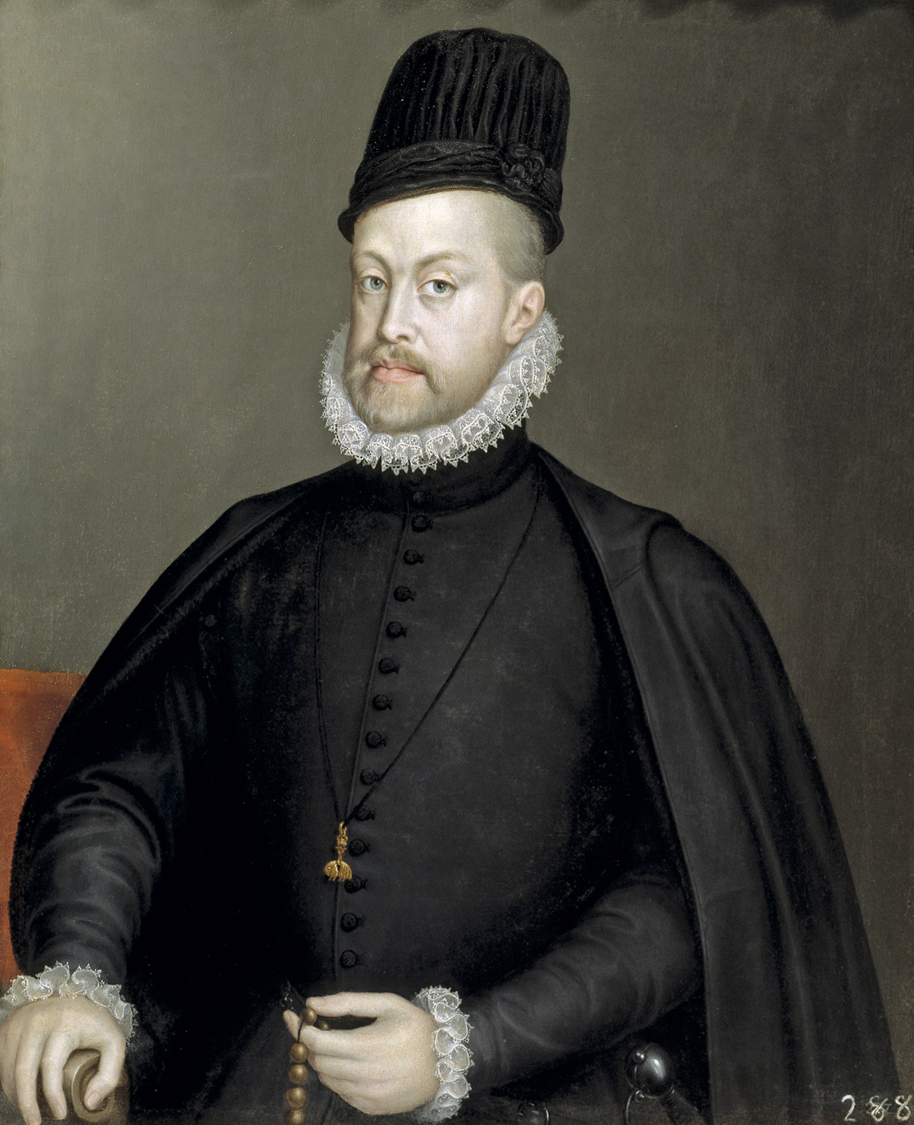
Anguissola Phillip II
Good, religious, just ruler over militant. both facets of the spanish king’s identity
Estilo Desornamentado - portrait lacks killing, crowns, implements of war. Very sober and subdued. Emphasis on intrinsic power unique to Carlos V and descendants.
Golden Fleece - pendant. allusion to faith: pendant on the chest. sheeps’ skin. order of the golden fleece. grand master within the order.
fleece: inherited title from duke of burgundy, phillip the handsome. catholic military order protecting the church. advocating for the maintenance of the catholic empire, similar to Carlos V fighting to keep catholicism against the protestants in the north
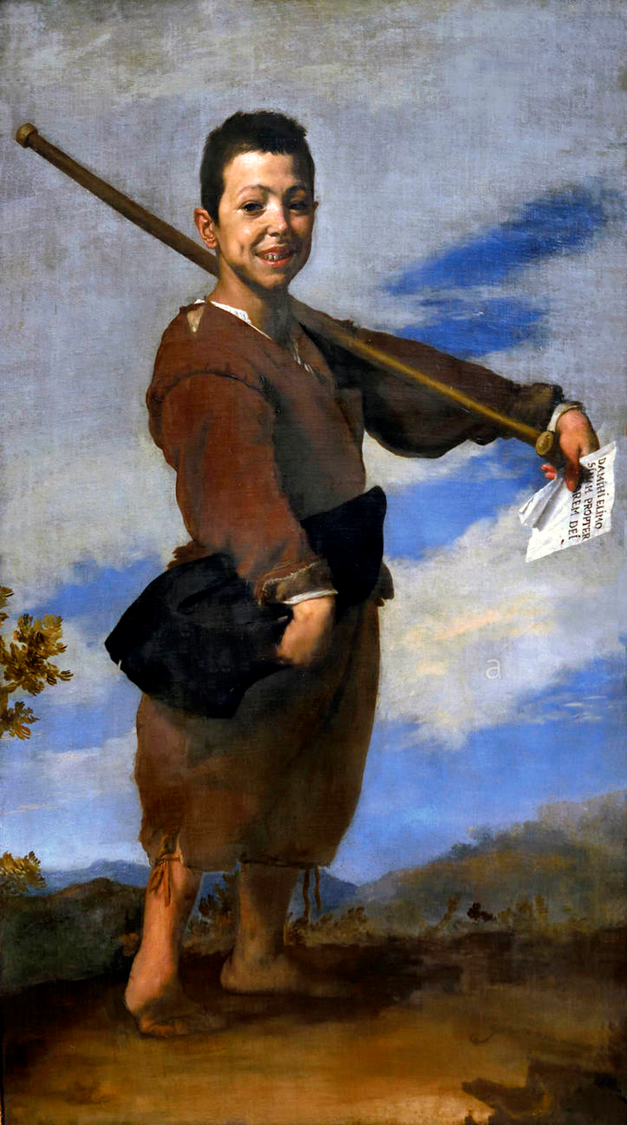
Ribera Club Footed Boy
Pastoral setting for a private patron
Perspective of looking up at him glorifies him
Kingly stance and portrait capable and lively, rougeish holding of the cane. crafty expression, holding permission to beg. not struggling, animated character not to be pitied
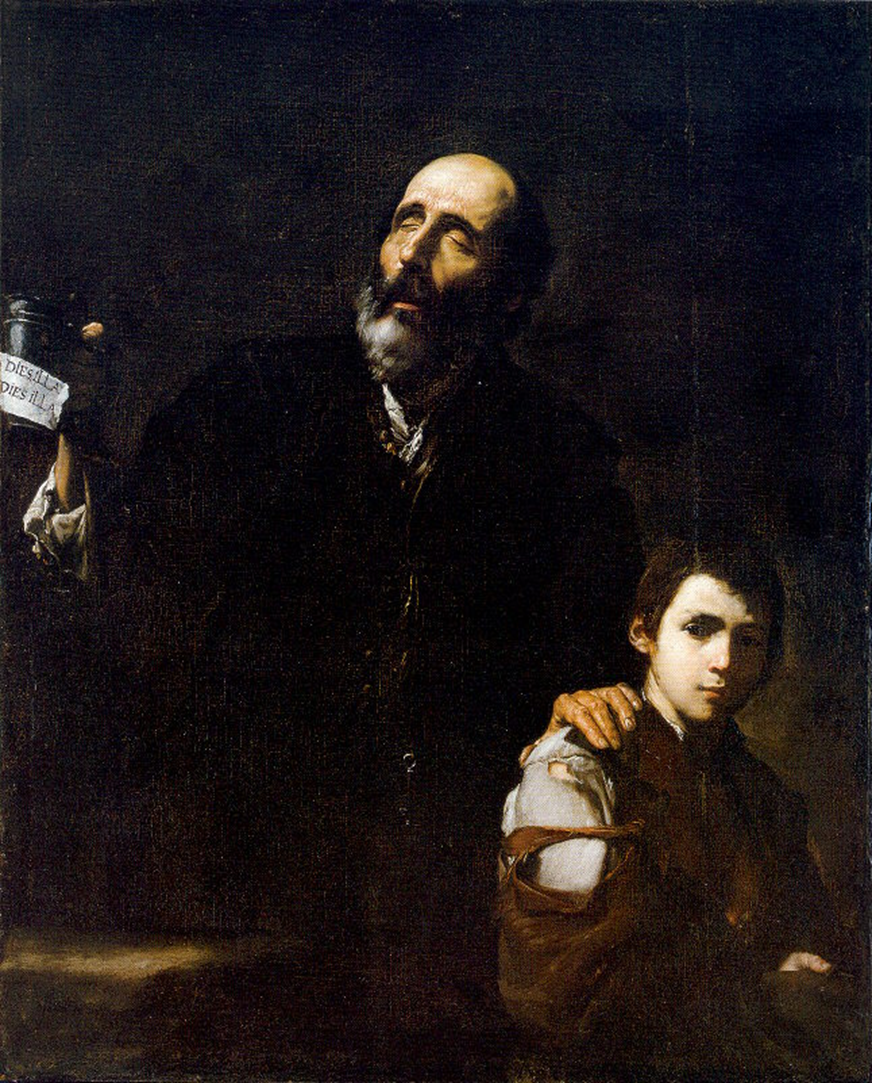
Ribera Blind Old Beggar
Reference to Lasarillo E Tormes.
Conflict between figures. Old man: face upturned with light shining down invokes divine or religious imagery. carrying permit for the beggar
Boy: addressal of the viewer, confident and rascally. not innocent. acts as the old man’s eyes and gets into trouble. enabled, capable, a ¾ portrait similar to that of kings.
Invokes the emotion of compassion for poverty
Baroque principles bc tenebris, chiaroscuro, no foreground. dramatic lighting
a high depiction of those in a lower station
Picaresque
of or relating to rogues or rascals (Spanish word pícaro, meaning "rogue" or "rascal.”
of, relating to, suggesting, or being a type of fiction dealing with the episodic adventures of a usually roguish protagonist
representative of a class movement where people with lives on the margins became interest, stories about their escapades became popular
Tridentine Art
3 rules:
Smart, strategic, intellectual. narrative clarity to inspire piety to illiterate viewers. NOT el greco
Narrative clarity
Emotional resonance
Doctrinal accuracy
Counter reformation. Defined what “good” art was in the eyes of the church. used to educate viewers and remind them of the histories
Martyrdom of St. Peter
Baroque - realism, drama to connect to viewer (the dirty feet, receding hairline, and unmanicured besrd make him not idealized like in the Renaissance)
council of Trent - why? Emphasis on piety narrative clarity
focus on peter’s piety rather than the bloodshed and shocking cruelty of martyrdom.
humanizes St. Peter through realism and immediacy